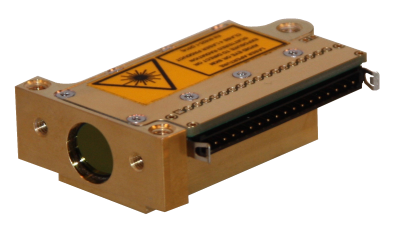
Laser Radar often referred to as LIDAR (LIght Detection And Ranging) or LADAR (LAser Detection And Ranging), has been one of the fastest growing applications in photonics over the last decade. Just like in traditional radar, lidar has a wide variety of signal detection methodologies ranging from simple time-of-flight (TOF), to linear frequency modulation (LFM), and even quasi-random phase encoding. In order to understand why you would choose one method over the other, it is important to understand what the goal of your lidar system is.
Just as in most other optical measurement systems the primary tradeoffs come from the uncertainty principle (a full examination of this is outside the scope of this blog post), but to put it in the most simplistic terms: the shorter the time on target the more accurate the distance measurement is and the longer the time on target the more accurate speed measurement is.
Balancing the tradeoff between the ambiguity in speed and location is why there are so many different radar and lidar signal processing methodologies for identifying moving targets. While for the majority of military and scientific applications it is necessary to be able to identify the position and speed of a target, the vast majority of commercial lidar application only requires knowledge of an object location. Therefore, TOF lidar systems are still one of (if not the) the most popular commercial systems on the market today particularly for 3D scanning of objects, rooms, and landscapes.
In a TOF lidar system, the distance resolution is directly proportional to the pulse width of the laser source, this is because the best you can do is to determine that the laser light was on the target at some point during the length of the pulse. As a result, in a TOF lidar system, the distance resolution is equal to half (to account for the round trip of the laser pulse) of the product of the speed of light and lasers pulse width.
Based on this fact, if your primary concern is the position of a target then in order to minimize ambiguity and increase the distance resolution of the system, you will want to have the lasers time on target be as short as possible. Because of this fact, the demand for lower cost short pulsed lasers have skyrocketed in recent years, and one of the more ideal solutions for this application are passively q-switched microchip lasers.
The FP laser series from Bright Microlaser in Italy is an ideal solution for this application. The simplicity of these passively q-switched lasers, not only makes them relatively inexpensive in comparison to most short pulse lasers, the simplicity also allows for an ultra-compact design powered by a standard 5V power supply. This further reduces the overall cost of integration, making them extremely popular for compact 3D scanning lidar systems.
The Bright Microlaser offers solutions with pulse widths as short as 400ps, while still maintain a transform-limited single longitudinal mode and a M2 of less than 1.2. Available in wavelengths from 1064 nm to as low as 213 nm.
For additional for detailed technical specifications on Bright Microlaser‘s passively q-switched lasers for time-of-flight lidar click here or talk to one of our laser experts today by calling 1-636-272-7227.

 SHIPS TODAY
SHIPS TODAY 
